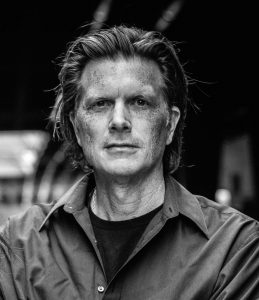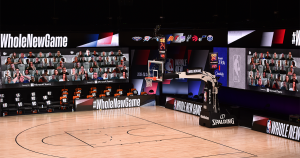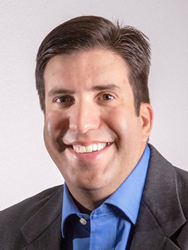With Empty Stands, Venues Adapt Their Sound Systems
Achieving authentic fan audio in an open stadium is a challenge
Story Highlights
Sports venues have spent millions of dollars on sound systems in recent years, with the speakers focused on the seating areas to deepen engagement with fans in the stands. But what happens when those fans are static cardboard cutouts? In this time of absentee fans, venues are turning some of those sound systems to face the field of play, using the PA systems for artificial crowd sounds to energize athletes and others on the field, court, or pitch.
The NBA has constructed the most elaborate sound-system architecture thus far: a line-array design divided into 10 zones around the venue, allowing the crowd-sound mixers to put different elements in different speaker zones at different times and volume levels to approximate home and visitor fans’ responses as the action moves around the court. These are authentically sampled NBA crowd and effects sounds that have drawn accolades for their realism. The NHL has adopted a similar, if less elaborate, sound design, using EA Sports’ videogames as its audio source.
However, both leagues play in indoor venues, where sound-system dynamics and acoustics are easier to manage and contain. The NBA has lined three sides of the courts in Disney’s Wide World of Sports complex in Orlando with 300+ actual fans populating 17-ft. LED videoboards filled via Microsoft Teams’ Together.
Baseball, on the other hand, most often has to deal with more-open spaces, and stands have been populated with static cutouts of fans. The sport has also been using prerecorded crowd noise and effects since beginning its belated 60-game season on July 23. But, with the 30 MLB teams using their own ballparks (with scheduling around geographic proximity), the sound systems and venue acoustics vary by location, unlike with the NBA’s games, all of which are being played in the same environment featuring the same sound-system components.
Existing Systems
Most ballparks are using their stadium sound systems without modifications or additions, says Justo Gutierrez, director, AV and sound, sports and live events, Diversified, an AV integrator.
“A few of the venues are using just part of their sound system: for instance, the lower bowl only or no outfield speakers,” he points out. “[Others] have distributed systems that have the bowl speakers pointed towards the field, so some of that sound spills onto the field from the same direction as the crowd.”
The league has left how such crowd sounds are deployed up to the individual teams and venues.
According to Ryan Knox, senior consultant, Idibri, an AV consultancy that has designed PA systems for dozens of stadiums and arenas, the challenge in these disparate venues is to make the prerecorded crowds sound believable and authentic. Hearing some tracks played in one venue made him wince, reminding him more of pink noise than of fans in stands.
“If you just want background noise, the [existing] sound systems can handle that; it’s just a matter of the volume,” he explains, noting that Idibri has done a number of college football practice venues for which the sound systems were designed to reproduce noise at high volumes to simulate the sonics of 80,000-seat university bowls. “But that won’t sound like an actual crowd, and it won’t sound like it’s coming from the seats. For that, you really need to pay attention to the production of the sounds and put speakers in the stands for an immersive system.”
Speakers in the Stands
One company is trying to do exactly that. In open-air venues, Sonofans, a Los Angeles-area firm founded to address sports’ new live-sound challenges, would put loudspeaker arrays in the stands, facing the field of play and pumping carefully calibrated custom crowd sounds at the players. Thus far, the company, started by Fred Vogler, a six-time Grammy Award-winning producer and mixer, has done demos of the system at Dodgers Stadium and the Arizona Diamondbacks’ Chase Field. The 12 line arrays he places in the seating areas have four to six speakers each, and the sound can be mixed both immersively and dynamically, with volume reaching upwards of 112 dBA, filling the field and able to mimic the localized reactions of crowds wherever a ball is hit.
Vogler says his content is a combination of audio he has recorded himself — he has worked with and consulted to various college football organizations in the past — and audio from videogames and network broadcasts that he has edited for clarity.

Producer/mixer Fred Vogler believes “the better the crowd sounds are in the stadium, the better they’ll sound on the air when the [broadcast] crowd mics pick them up.”
Vogler adds that the demonstration at Dodgers Stadium for team and venue owners and management put the system through a double play, an inning-ending strikeout, and a grand slam. “Their eyes lit up when they heard it.”
Future Football Sound
The NFL, whose season is scheduled to kick off on Sept. 10, has yet to announce its plans for crowds — real or otherwise — in its venues. The league appears to be leaning toward either allowing a small number of fans in the stands or providing artificial crowd tracks through the PA systems, or a combination of both. Reportedly, “enhanced” crowd noise will be limited to between 70 dB and 85 dB for games without fans present and will be played at a constant level throughout the game, to avoid using noise as a home-team advantage on defense.
Enclosed NFL stadiums present the biggest challenge for artificial crowd noise, because, in many cases, the venues are purposely designed to amplify home crowds noted for their lung capacity, such as the Minnesota Vikings’ U.S. Bank Stadium.
“The venues we work with are planning to deploy their systems in much the same way baseball has,” Gutierrez explains. “Our role thus far has largely been about how to help them zone their systems — turning off everything except field-facing lower-bowl speakers, for example — to adapt them to empty seats while still projecting sound for the field and the broadcast.”
A Matter of Money
While the notion of artificial crowd sounds is still new territory for live sports, persistent issues around budgets are also a consideration at a time when sports seasons and revenues are truncated.
“Everyone’s trying to figure out what to do, whether to make an investment [in adapting sound systems] for this,” says Idibri’s Knox. “Will it make the environment better for the players?”
Neither the Dodgers nor the Diamondbacks have yet greenlighted Vogler’s system. He says he has approached several NFL teams but has not had the opportunity to do a demo for that league yet: “We’re learning that it’s a tough time to get the clubs to spend money on extra services like these. We think it might be a better time for the MLB postseason and hoping the NFL likes the idea.”


